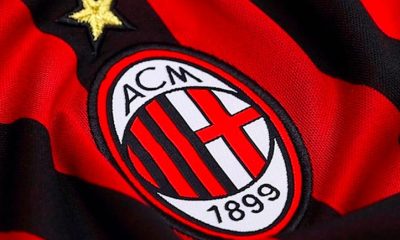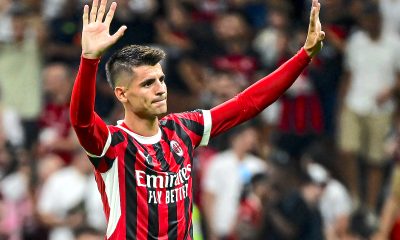Sport
Blood, Sweat, and Tears: “The Unforgettable Milan Derby”
Visceral, vibrant and unforgettable: Understanding the Milan derby
The National visited the sporting citadel that is San Siro to witness Inter take on AC Milan in one of football’s great rivalries

From Algeria to Brazil, England to the USA, AC Milan’s squad is drawn from players born in 14 countries. Neighbours Inter cast an equally wide net. The Italian champions boast stars from Argentina to Albania, Armenia to Iran. In total, there are players from 20 countries across both squads.
Wind back to 2007 when Milan won their seventh and last Uefa Champions League, and their squad came from eight countries. Things were changing by 2010 when Inter won their last Champions League and not one of their starting eleven was Italian and their manager Jose Mourinho was Portuguese.
Football has changed, become truly global and nationality barely matters when a team recruits a player. Rules limiting the number of ‘foreigners’ have all but been abandoned, yet there was something delightful about the first derby of the 2024/25 season being decided by a Milan fan who was born locally and joined the club age 12.
Matteo Gabbia’s goal, in the 89th minute of a game they were not expected to win, saw 10,000 visiting fans in the 75,000 crowd go crazy on the Curva Sud as their team triumphed in the derby of Madonnina – named in honour of the statue of the Virgin Mary at the top of Milan’s stunning cathedral which stands on top of of the cobblestoned city centre.
Milan had not started the season well, with only one win from their first four games. The pressure on their Portuguese coach, Paulo Fonseca, was intense. In the Champions League, Milan began with a 3-1 home defeat to Liverpool, and some feared he would lose his job should his side lose to Inter. Fonseca, 51, is a respected coach, but he had only been at Milan since July after two years at Lille.
Milan hadn’t defeated Inter for two years and lost six games in succession, being beaten in the equivalent game 5-1 last season. Fonseca changed his team to a 4-4-2 formation in both defence and attack, with Alvaro Morata and Tammy Abraham as the front two.
When Christian Pulisic, captain of the United States national team, put his side a goal up after 10 minutes, the changes appeared vindicated.
Inter equalised though locally born academy product Federico Di Marco – which was met by continued cries of ‘Gol DiMarco!’ on the public address system – an exciting, open, game ensued. It was decided when Gabbia’s header from a set piece created one of the great modern moments in AC Milan’s storied history.
Surrounded by delighted teammates, Milan’s number 46 stood up on the advertising hoarding in front of the joyous away fans as the home fans began streaming out of the stadium.
“I’m really happy,” Gabbia told The National this week. “It’s been a few amazing days, and I’ve felt so much love from both the fans and my teammates. The celebration was amazing too. Until now, my goals for Milan hadn’t necessarily led to a win or been as decisive as this one, but this goal made up for it all.
“I fully enjoyed the moment with the fans, and feeling their support was something special. The spirit in the team is the same – we keep working hard, and we want the season to go as well as possible, but that’s up to us.”
Asked about the significance of scoring in the derby for the team you’ve always supported, he replied: “It was perfect. As a kid, I dreamt of a moment like this, but I never imagined it would be this special. I want to keep doing well.”
Despite his Milan background, Gabbia was not considered a club hero. There were few qualms when he went on loan to Villarreal last season, but his time in Spain improved him as a player. And his standing has improved since Sunday.
“Score the winner in the derby and you get lifetime status as a hero,” one fan, Alexio, explains.
“We always knew we were a good team,” added English striker Abraham, who couldn’t believe that he missed his own 77th minute effort.
“We haven’t had the best start to the season, but we knew [the derby] was important and wanted to show how to fight and for people not to forget about us. But from the first to the last minute we played as a team, showed we’re a team and created the better chances. And I’m so happy for the goalscorer.”
To see a big game at San Siro is a life experience. Italy’s two best supported clubs – judged by average attendances – play there. Crowds have surged in the post-Covid world too, with both averaging 72,000 in the 75,000-capacity stadium – the figure reduced from 80,000 as sections behind the goal are blocked off for security reasons. It wasn’t fans misbehaving, more the vibrations when they jumped en-masse. The next best supported Italian team is Roma with 62,000, then Napoli with 46,000 average home crowds.
No stadium in the world looks quite as imposing from the outside as Milan’s San Siro. Not Camp Nou, Old Trafford, Anfield, the Bernabeu or Maracana. None come close to the triple-tiered concrete hulk of the 80,000-seater stadium in the wealthy western suburbs of Italy’s financial heart. “Milan earns, Rome spends”, they say.
San Siro grabs you as you leave the metro station of the same name; its giant red girders sitting on top of cylindrical towers around the stadium’s perimeter. For a night game, shafts of white light beam out through the slits in the vast stairs of layered ramps which hang to the stadium’s outer walls and lead in a clockwise direction from ground level to various entry points around stadium.
The overall effect is that the long-time home of Inter and AC Milan has a remarkable identity. It looks like a spaceship, like it wants to fight, like it knows its place as a concrete, glass and steel cathedral of world football.
On Sunday, around 10,000 of the seats were given to Milan fans. The usual maximum away allocation for a Premier League game is 3,000, but in Milan it’s different and the black band of the Curva Sud is like a seam of coal amid the Inter fans. All Milan fans wear black T-shirts on the warm September night.
“It’s mandatory to wear black,” explains Alexio, a former ultra himself. “The instructions are there in our printed fanzine. There’s no politics behind it, it’s not a right-wing thing.

But if you have 5-10,000 fans all dressed in black it makes a massive visual impact.”
They all sing in unison. It’s impressive. They also unfurl huge banners which cascade downwards to hang over the Inter fans. They read: “You think you are the real ultras but in the end you face reality: you are just the eternal joke of this city.”
And Inter fans probably share the opinion of their neighbours amid the local tribalism. And nowhere is the ultra culture as strong as in Italy, where it influences fan culture far and wide. There can be a dark underbelly to the ultra culture with links to organised crime, but Milan’s fans are impressive as they hold red and white sheets of plastic in Milan’s colours.
But who are they? How are they so well organised to look the same, sing the same lines and choreograph vast displays of words and images. It takes some effort and organisation to unfurl a 250-foot flag across multiple tiers of a stadium saying “I’ve got a devil in me” in English as Milan did in 2005 when they played England’s Red Devils, Manchester United.
Behind the banner, 12,000 fans held up red, white and black cards in the shape of a devil. Hundreds of streamers were thrown in unison, flares lit too.
Milan’s hardcore support features one main ultra group: Curva Sud Milano. The leaders or the ones who stand at the front and orchestrate are revered by their followers.
“The tifo leaders are always well known,” one Milan supporter explains. “When I was a kid they seemed like rock stars as they led 6,000 people with just one microphone. It’s funny because as I grew I became friends with most of them.”
They can look aggressive and the loud bangs from fireworks add some edge to the atmosphere, but it never feels dangerous and there are unwritten rules and curiosities. The rival fans congregate in Milan’s Piazza Axum, just outside the Curva Sud gates; Inter’s Ultras are on the other side, around the Baretto outside Curva Nord.
There’s a fence segregating the rival fans and invectives fly, but when the two sections meet, rivals fans talk like old friends. This would be unheard of in England, but then Manchester United and Liverpool would never trade players, while Inter and Milan have no such issues. Andrea Pirlo, one of Milan’s greatest modern-day players, arrived from Inter in 2001.
It feels visceral, save for modern touches that don’t convince. Do the club really need pitch side smoke machines when there’s so much already in the air? Adverts for betting companies proliferate, while many of the announcements on the scoreboards are in English – denoting the international interest around the game.
Inter announce a partner for the back and sleeves on their kit. Is there anywhere they wouldn’t put a sponsor? They have one excuse: one reason both clubs need San Siro to change is that it lacks the cash-generating executive facilities of the new homes of Juventus.
The National is sitting in the Inter section by the visiting fans. The Inter fan in the next seat crosses himself 10 times, praying that his team triumphs. There are even a couple of Milan fans in the same section, it’s not an issue for them.















